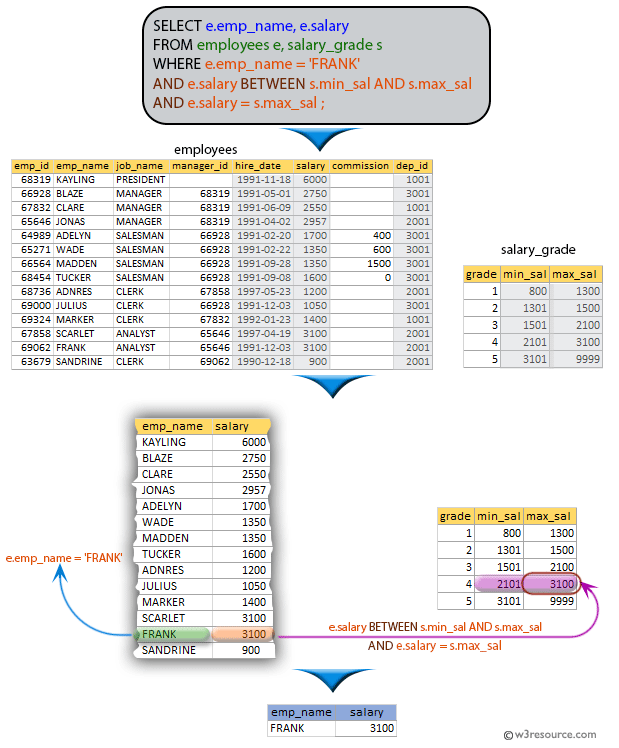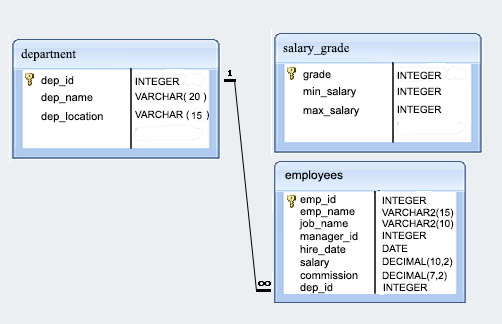SQL Exercise: Salary of FRANK if his salary is equal to max_sal
[An editor is available at the bottom of the page to write and execute the scripts.]
58. From the following table, write a SQL query to find the name and salary of the employee FRANK. Salary should be equal to the maximum salary within his or her salary group.
Sample table: employees
Sample table: salary_grade
Pictorial Presentation:
Sample Solution:
SELECT e.emp_name,
e.salary
FROM employees e,
salary_grade s
WHERE e.emp_name = 'FRANK'
AND e.salary BETWEEN s.min_sal AND s.max_sal
AND e.salary = s.max_sal ;
Sample Output:
emp_name | salary ----------+--------- FRANK | 3100.00 (1 row)
Explanation:
The said query in SQL that selects the name and salary of an employee named 'FRANK' whose salary falls within a salary grade range, and whose salary is equal to the maximum salary of that salary grade.The "WHERE" clause restricts the results to employees whose name is 'FRANK' and whose salary falls within a salary grade range by using the "BETWEEN" operator to compare the employee's salary to the minimum and maximum salaries of the salary grade.
The query then filters the results to employees whose salary is equal to the maximum salary of the salary grade.
Practice Online
Sample Database: employees
Have another way to solve this solution? Contribute your code (and comments) through Disqus.
Previous SQL Exercise: List the employees whose manager name is JONAS.
Next SQL Exercise: Analysts or managers with a salary range, no commission.
What is the difficulty level of this exercise?
Test your Programming skills with w3resource's quiz.


